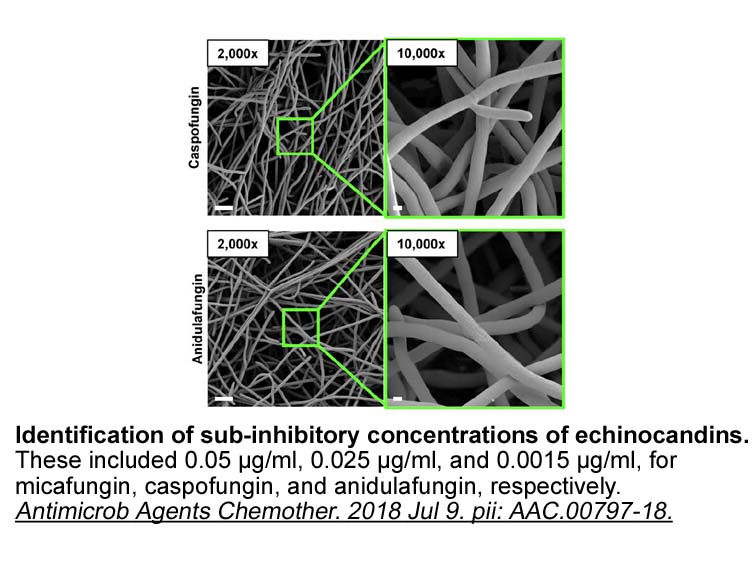Archives
To date the molecular responses of
To date, the molecular responses of AChE have been partially analyzed in its mRNA level or protein activity in aquatic animals. To understand the correlation between transcriptional change and activity of AChE, we conducted both experiments in B. koreanus. Generally, the LY364947 patterns of the Bk-AChE transcript after exposure to six pharmaceuticals showed similar patterns to those of Bk-AChE activity (Fig. 3). The Bk-AChE transcript level was significantly decreased 24h after exposure to ATP and TMP (100 to 100,000μg/L) more than other compounds. Time-course experiments with ATP, CBZ, SMX, and TMP showed that an early decrease in the Bk-AChE transcript level was detected at less than 12h after exposure to a high concentration (1,000μg/L). In the case of ATP exposure, expression of the Bk-AChE transcript was declined even at 100μg/L. However, other compounds had no effect on the expression of Bk-AChE mRNA at 1–50μg/L. Regarding the transcriptional profiles in response to ATP ad TMP exposures, Bk-AChE activity is directly related to its mRNA level, as suggested by Xing et al. (2010). In addition, Bk-AChE activity and gene expression are useful as a potential biomarker to predict early signals of ATP and TMP toxicity. In other groups, this relationship was observed in time-course experiments, suggesting that combined experiments with both transcript and activity analysis would be helpful to understand the mode of action of pharmaceuticals on the rotifer nervous system at the molecular level.
Unlike other compounds, ATN and OTC had no effect on the growth of B. koreanus (Rhee et al., 2012), which is in accord with our results on Bk-AChE activity. However, for the toxic effect of OTC, there is controversy. Indeed, OTC inhibited the growth of the microalgae T. chuii and induced mortality to the crustacean A. parthenogenetica (Ferreira et al., 2007). Therefore, to clarify this contradictory result, further study of the acute toxic effect of OTC is necessary for diverse aquatic organisms.
Most pharmaceuticals are designed to have specific mode of actions, and therefore detrimental effects induce unforeseen results in the neurotransmission of aquatic animals. However, little is known about the toxicological effects of pharmaceuticals on the nervous system of aquatic organisms. Based on our findings, pharmaceuticals will have different toxicity on each aquatic organism, as demonstrated in a marine bacterium (V. fischeri), a water flea (D. magna), and the Japanese medaka (O. latipes) (Cleuvers, 2003; Ferreira et al., 2007; Kim et al., 2007). These findings suggest that the effect of pharmaceuticals on diverse aquatic organisms should be extensively investigated to obtain a more comprehensive result. Even though the selected pharmaceuticals have diverse modes of action, general trends in the sensitivity of rotifer were observed in response to ATP, CBZ, SMX, and TMP exposure  (Rhee et al., 2012), such as inhibition of growth and reproduction, induction of detoxification mechanism-related transporter (e.g. P-gp), and AChE inhibition. In addition, upon pharmaceutical exposure at high concentration that exceeds environmental concentration, our results showed inhibition of Bk-AChE activity and gene expression, suggesting that either the increased chronic exposure to pharmaceuticals in an aquatic environment or the accumulation pattern via the food web could cause adverse effects on aquatic organisms.
In conclusion, we investigated the modulation of AChE activity and mRNA expression after exposure to six pharmaceuticals in the monogonont rotifer B. koreanus. Interestingly, Bk-AChE activity and gene expression showed a sensitive response to ATP and TMP exposure compared to other compounds, suggesting that Bk-AChE may be a useful biomarker for risk assessment of these compounds as an early signal of their toxicity in aquatic environments. In addition, it was found that ATP and TMP may have a neurotoxic effect on B. koreanus by inhibiting AChE activity. Concerning the sensitivity of rotifers agai
(Rhee et al., 2012), such as inhibition of growth and reproduction, induction of detoxification mechanism-related transporter (e.g. P-gp), and AChE inhibition. In addition, upon pharmaceutical exposure at high concentration that exceeds environmental concentration, our results showed inhibition of Bk-AChE activity and gene expression, suggesting that either the increased chronic exposure to pharmaceuticals in an aquatic environment or the accumulation pattern via the food web could cause adverse effects on aquatic organisms.
In conclusion, we investigated the modulation of AChE activity and mRNA expression after exposure to six pharmaceuticals in the monogonont rotifer B. koreanus. Interestingly, Bk-AChE activity and gene expression showed a sensitive response to ATP and TMP exposure compared to other compounds, suggesting that Bk-AChE may be a useful biomarker for risk assessment of these compounds as an early signal of their toxicity in aquatic environments. In addition, it was found that ATP and TMP may have a neurotoxic effect on B. koreanus by inhibiting AChE activity. Concerning the sensitivity of rotifers agai nst pharmaceutical exposures, responses from aquatic invertebrates are not available as yet for comparison. Moreover, the acute toxicity of pharmaceuticals did not show a high level of lethal toxicity in rotifers which is similar to other aquatic animals (Cleuvers, 2003; Ferrari et al., 2004; Kim et al., 2007; Rhee et al., 2012). Although physiological responses including acute toxicity seems not to be suitable for developing rotifers as a sensitive species against pharmaceuticals, molecular sensitivity of rotifer AChE would provide information for future experiments with other invertebrates. Furthermore, a long-term accumulation/exposure by such compounds lead to adverse effects on the nervous system which need to be explored by future studies.
nst pharmaceutical exposures, responses from aquatic invertebrates are not available as yet for comparison. Moreover, the acute toxicity of pharmaceuticals did not show a high level of lethal toxicity in rotifers which is similar to other aquatic animals (Cleuvers, 2003; Ferrari et al., 2004; Kim et al., 2007; Rhee et al., 2012). Although physiological responses including acute toxicity seems not to be suitable for developing rotifers as a sensitive species against pharmaceuticals, molecular sensitivity of rotifer AChE would provide information for future experiments with other invertebrates. Furthermore, a long-term accumulation/exposure by such compounds lead to adverse effects on the nervous system which need to be explored by future studies.